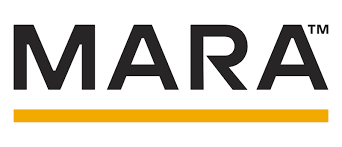
The ultimate guide to trading ETFs
ETFs offer many advantages over traditional stock trading, making them a popular choice for anyone looking to make money in the markets. This article will cover everything you need to know about trading ETFs, from the basics to more advanced concepts.
Whether you’re a seasoned pro just getting started or want to improve your trading abilities, we’ve covered you with all the information you’ll need to begin trading ETFs.
What are ETFs?
An Exchange-Traded Fund, or ETF, is a form of investment vehicle that trades on a stock market.
How do ETFs work?
When you trade in ETFs, you trade a basket of assets that share a common characteristic, such as theme, sector, or geographical region. For example, an ETF could be themed ‘women in leadership’ and include stocks from companies run by women. Or an ETF could be based on market capitalisation and region and include stocks from the largest companies in Japan.
One of the benefits of investing in an ETF is that it allows you to gain exposure to a wide range of assets without having to purchase each one individually. If you are interested in a theme or a sector, you can simply buy an ETF with a pre-selected bundle of stocks.
The benefits of trading ETFs
Every day, millions of dollars’ worth of Exchange-Traded Funds (ETFs) are traded on stock exchanges around the world.
ETFs are gaining popularity among investors because they provide several advantages. For example, ETFs are generally more cost-effective than traditional mutual funds.
They also offer great flexibility and choice, as investors can choose from a wide range of ETFs that track different asset classes.
In addition, ETFs can be traded like stocks, allowing investors to buy and sell them throughout the day on the stock market.
The different types of ETFs available
Many different ETFs are available, including those that track domestic and international stock markets, bonds, commodities, and even crypto.
How to trade ETFs
To trade ETFs, you must open an account with a broker that offers ETF trading on the assets you are interested in. You can purchase or sell an ETF just like any other stock once you’ve set up an account. ETFs can be a convenient and cost-effective way to build a diversified portfolio.
Tips for successful trading
Exchange-traded funds have become increasingly popular as investors seek to diversify their portfolios and access various asset classes. However, trading ETFs is not without its challenges, and there are a few things investors should keep in mind to succeed.
First and foremost, it is crucial to have a clear investment strategy. ETF trading can help you profit from market swings by allowing you to invest in a diversified portfolio of assets. ETFs provide exposure to various asset classes and sectors, so knowing what you want is critical before you start trading.
It’s also critical to be aware of the charges that come with ETFs. While they are typically lower than mutual funds, there can still be significant costs associated with buying and selling ETFs.
Finally, it is essential to monitor the performance of your ETFs regularly. This will help you adjust your portfolio as needed and avoid potential losses.
To that end
ETF trading can be a lucrative investment strategy if done correctly. Following the tips in this article can increase your chances of success while trading ETFs. Remember to always do your research before making any investment decisions.





